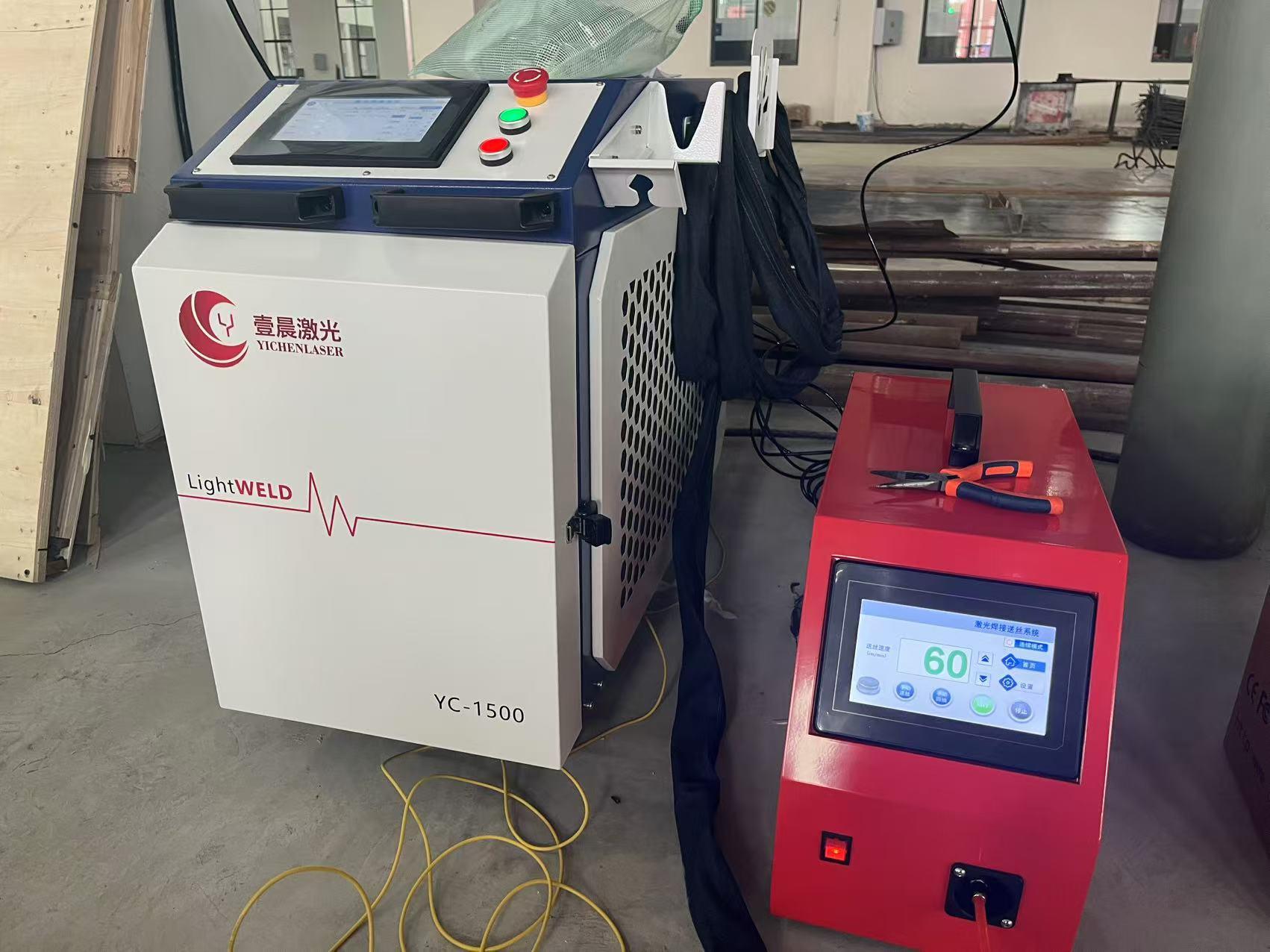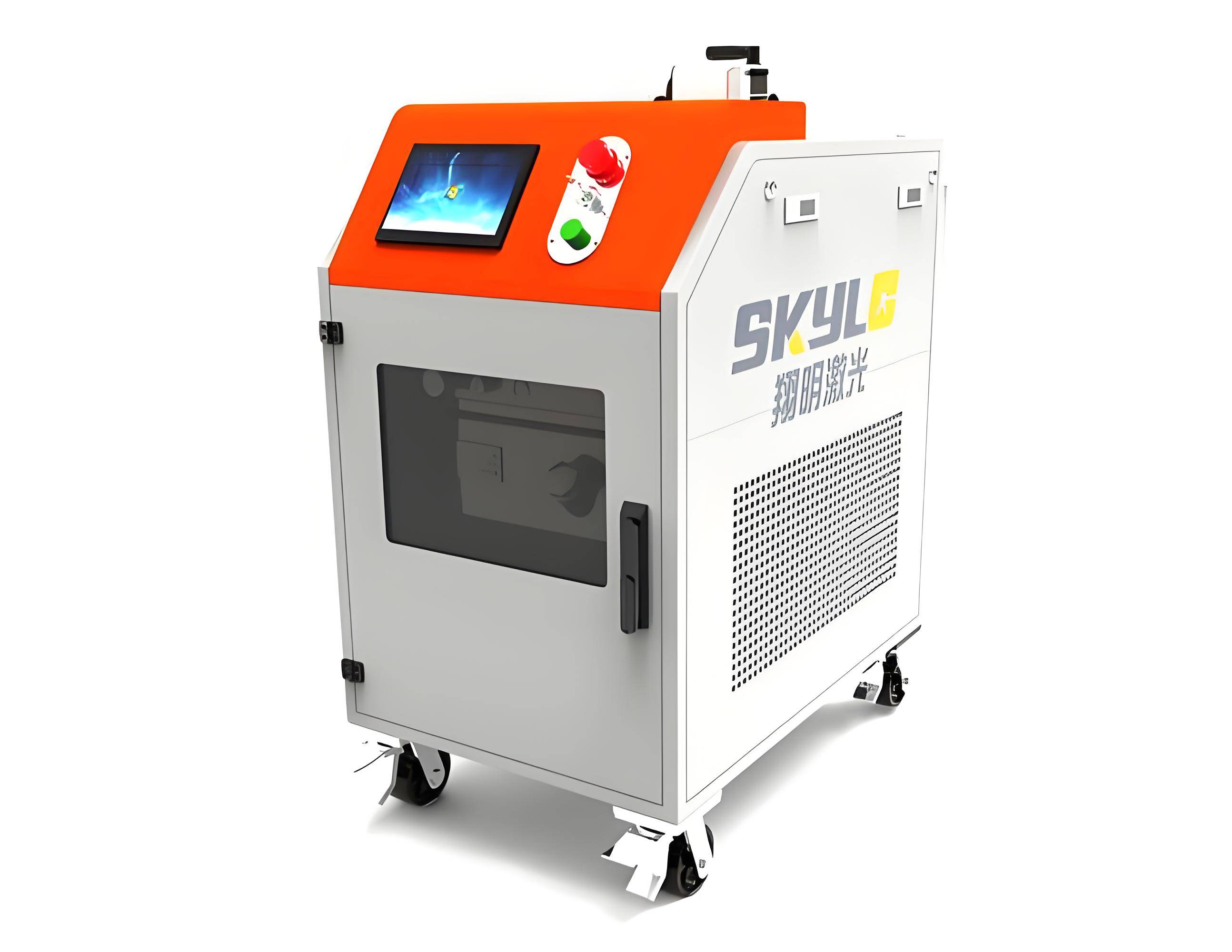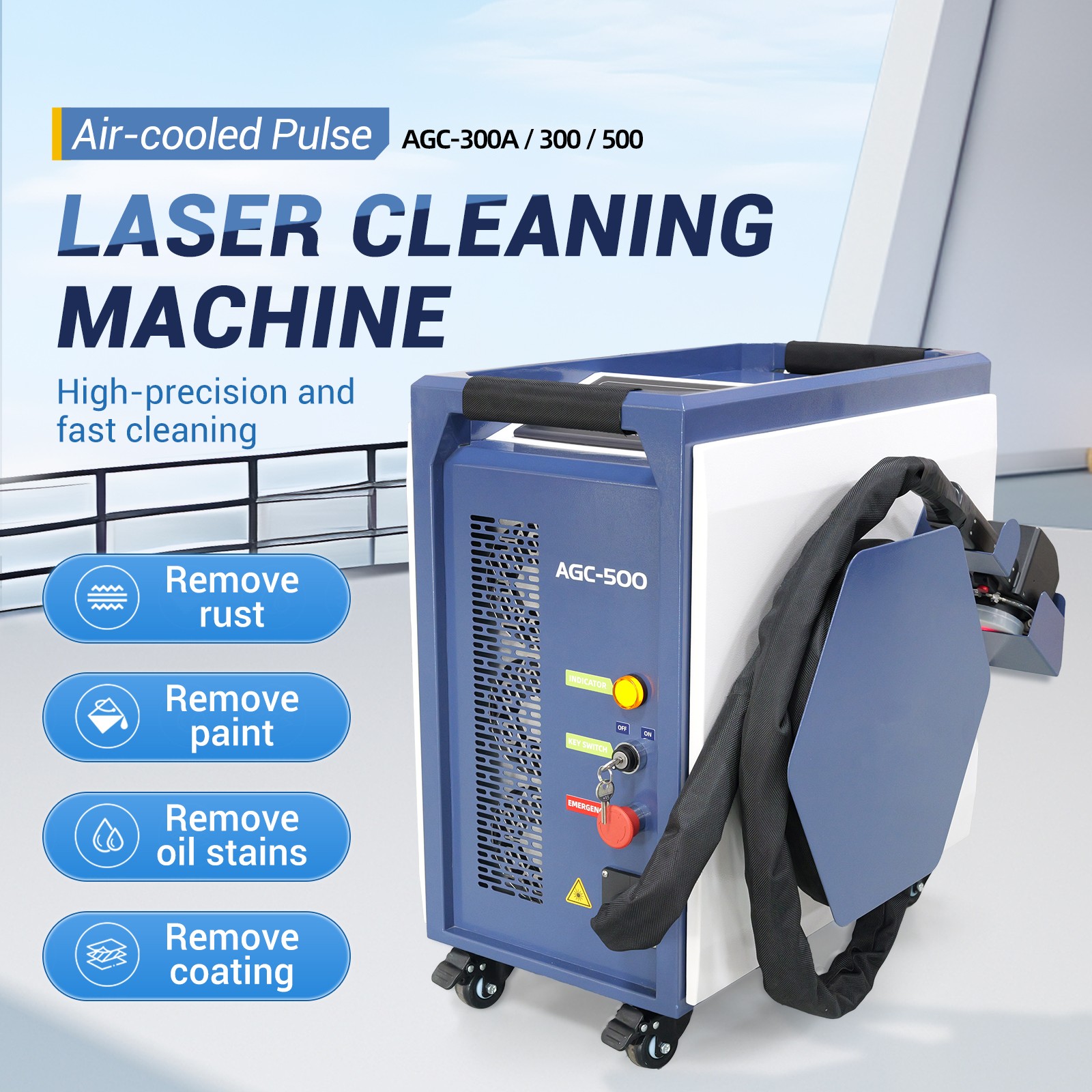As someone who has been deeply involved in the field of metal surface treatment for years, I understand the significance of laser rust removal in industrial applications. From ship maintenance to automotive manufacturing and even cultural relic restoration, laser rust removal has gained widespread attention for its efficiency and eco-friendliness. However, many people have questions about the temperature environments in which this technology can be used: Can it function effectively in high temperatures? Will low temperatures affect its performance? Will the equipment malfunction due to temperature changes? Today, drawing on my experience and industry knowledge, I’ll provide a detailed explanation to help you understand how laser rust removal performs in various temperature conditions.

How Laser Rust Removal Works and Its Relation to Temperature
To understand the temperature environments suitable for laser rust removal, we need to start with its basic principle. Laser rust removal uses a high-energy-density laser beam to irradiate the metal surface, causing rust, oil, or coatings to rapidly vaporize or peel off, achieving a clean surface. The core of this technology lies in the laser’s energy output and the thermal reaction on the material’s surface. The ambient temperature directly affects the laser equipment’s performance, the material’s surface reaction, and the overall rust removal outcome.
Generally, laser rust removal equipment is designed to operate within a certain temperature range, but changes in ambient temperature can impact several key factors:
Laser Stability: The optical components inside the laser are sensitive to temperature, and excessively high or low temperatures may cause fluctuations in laser output power.
Surface Reaction: The rust layer on a metal surface reacts differently to heat and vaporization at varying temperatures.
Equipment Cooling and Protection: In high-temperature environments, the equipment’s cooling system needs to be more efficient; in low temperatures, there’s a risk of condensation or frosting.
To give you a clearer picture, I’ve compiled a table summarizing the equipment’s performance and considerations in common temperature ranges:
| Temperature Range | Equipment Performance | Applicable Scenarios | Precautions |
|---|---|---|---|
| -10°C to 0°C | Operates normally but requires preheating to prevent condensation. | Outdoor low-temperature settings, such as winter ship maintenance. | Ensure the equipment has anti-freeze protection and allow sufficient preheating time. |
| 0°C to 40°C | Optimal working temperature with stable performance and high efficiency. | Factory workshops, indoor operations. | Regularly check the cooling system to ensure proper ventilation. |
| 40°C to 60°C | Operable, but cooling demands increase, and power may slightly decrease. | High-temperature industrial settings, such as summer outdoor work. | Enhance cooling measures and avoid prolonged continuous operation. |
| Above 60°C | Not recommended, as the laser may overheat, affecting lifespan and effectiveness. | Extreme high-temperature environments, such as desert regions. | Use a professional cooling system or suspend operations. |
Laser Rust Removal in Low-Temperature Environments: Challenges and Solutions
In cold winters or high-latitude regions, low temperatures can pose a challenge for laser rust removal. I recall a project at a shipyard in northern China where the outdoor temperature dropped to -15°C, and the client was concerned that the laser rust removal equipment wouldn’t function properly. In reality, modern laser rust removal equipment is designed with some degree of low-temperature adaptability, but several factors need attention:
Equipment Preheating: In low temperatures, the laser’s optical components may underperform due to the cold. Most equipment includes a preheating function, requiring a few minutes of warm-up to reach optimal performance.
Anti-Condensation Design: Low temperatures can cause condensation on the equipment’s internal components or lens, affecting laser output. I recommend choosing equipment with anti-condensation protection or using dry nitrogen to purge the lens before operation.
Material Reaction: At low temperatures, the rust layer on metal surfaces can become more “stubborn” due to reduced heat conductivity. Slightly increasing the laser power or extending the irradiation time can address this, but care must be taken to avoid overheating and damaging the base material.
For example, in one project, we performed rust removal inside a cold storage facility where the temperature was near -10°C. By preheating the equipment and adjusting the laser parameters, we successfully completed the task, and the client was thrilled with the results. This experience taught me that with proper operation, low temperatures don’t have to be a barrier to laser rust removal.

Laser Rust Removal in High-Temperature Environments: Ensuring Efficiency
Compared to low temperatures, high-temperature environments present challenges mainly related to equipment cooling and stability. I once observed a scenario in a steel structure factory in southern China where the summer workshop temperature reached 45°C. After several hours of continuous operation, the laser rust removal equipment experienced a slight power drop due to increased cooling demands, as the laser’s core components were overheating.
To ensure effective rust removal in high temperatures, here are some tips based on my experience:
Enhance Cooling: Choose laser rust removal equipment with efficient air-cooling or water-cooling systems. In outdoor high-temperature settings, water-cooling systems can significantly extend equipment lifespan.
Shorten Continuous Operation Time: Avoid running the equipment continuously for long periods. I suggest pausing for a few minutes every 1-2 hours to allow the equipment to cool down.
Monitor Ambient Temperature: In environments above 40°C, use a portable thermometer to monitor the temperature around the equipment, and if necessary, implement additional cooling measures like fans or air conditioning.
Interestingly, high temperatures have a minimal impact on the rust removal process itself. Since laser rust removal relies on instantaneous high-energy thermal effects, higher ambient temperatures may even make the rust layer easier to vaporize. However, if the temperature exceeds 60°C, not only is there a risk of equipment overheating, but operator safety could also be compromised. In such extreme conditions, I recommend pausing operations or implementing additional safety measures.

Case Studies in Special Temperature Environments
To provide a clearer understanding of how laser rust removal performs in different temperature conditions, I’d like to share two real-world case studies.
Case Study 1: Cultural Relic Restoration in Extreme Cold
In a cultural relic restoration project, we needed to remove rust from a bronze sculpture exposed to an outdoor temperature of -20°C. The sculpture’s surface was heavily rusted, and the material was sensitive to temperature changes. We selected a low-power pulsed laser device and equipped it with an anti-condensation protective cover. Before starting, we preheated the equipment thoroughly and adjusted the laser frequency to suit the low-temperature material properties. The result? The sculpture’s surface was cleaned impeccably without any damage to the base material. This experience showed me that laser rust removal is entirely feasible in low temperatures with the right equipment and approach.
Case Study 2: Bridge Maintenance in High Temperatures
In a coastal city in southern China, we performed rust removal on a steel bridge during the summer, with outdoor temperatures reaching 42°C. The tight schedule required the equipment to run for over 8 hours daily. To prevent overheating, we used a water-cooled laser rust removal machine, set up a temporary sunshade, and employed industrial fans for additional cooling. These measures ensured stable power output, and the rust removal efficiency met expectations perfectly.
Impact of Temperature on Different Materials
Beyond the equipment itself, the effectiveness of laser rust removal also depends on the type of material being treated. Different materials react differently under varying temperatures. Here’s a breakdown of some common materials:
Steel: Within the 0°C to 40°C range, steel surfaces react most consistently to laser rust removal. In low temperatures, slightly higher power may be needed, while in high temperatures, care should be taken to avoid overheating and surface oxidation.
Aluminum Alloys: Aluminum has high thermal conductivity, so rust removal efficiency may decrease slightly in low temperatures, requiring longer irradiation times.
Copper and Copper Alloys: Copper has lower laser absorption, but rust removal is more effective in higher temperatures. However, laser power must be controlled to avoid surface damage.
Composite Materials: Some composites are sensitive to temperature changes, so operating in a standard temperature range (15°C to 30°C) is recommended to protect the base material.

How to Choose the Right Laser Rust Removal Equipment
Selecting the appropriate laser rust removal equipment for different temperature environments is critical. Based on my years of experience, here are some key tips:
Check the Operating Temperature Range: High-quality laser rust removal equipment typically specifies its applicable temperature range in the manual. Opt for models that can operate reliably between -10°C and 50°C.
Focus on Cooling Systems: For high-temperature environments, water-cooling systems are superior to air-cooling. In low temperatures, ensure the equipment has anti-condensation features.
Power Selection: In extreme temperatures, choose equipment with slightly higher power to compensate for potential efficiency losses.
Brand and After-Sales Support: Select reputable brands with reliable maintenance support to ensure the equipment performs well in challenging conditions.
Practical Tips for Operation
Whether in low or high temperatures, operating laser rust removal equipment requires extra caution. Here are some practical tips I’ve gathered:
Safety First: Laser equipment emits intense light, so operators must wear professional protective goggles and ensure the work area is free of flammable materials.
Regular Maintenance: Extreme temperatures can accelerate equipment wear. Regularly inspect the laser and cooling system, and clean dust or condensation from the lens.
Test Before Full Operation: In unfamiliar temperature conditions, test on a small area first to fine-tune parameters before proceeding with large-scale work.
Record Parameters: Laser power, frequency, and scanning speed may vary by temperature. Keep a record of parameters for each job to optimize future operations.

Conclusion: Temperature Isn’t the Limit, Technology Is Key
Through years of hands-on experience, I’ve found that laser rust removal is far more adaptable to various temperature environments than many realize. With the right equipment and proper operational measures, it performs exceptionally well, whether in the freezing winters of the north or the scorching summers of the south. The key lies in understanding the equipment’s capabilities, mastering material characteristics, and adjusting operations flexibly based on the environment.
I hope this article has clarified your questions about the temperature environments suitable for laser rust removal. If you have specific scenarios or further questions, feel free to share them, and I’ll do my best to provide detailed guidance!
Frequently Asked Questions
1. Can laser rust removal be used in extremely cold environments like -20°C?
Yes, it’s possible with equipment designed for low-temperature operation and proper preheating. Test a small area first to ensure parameters suit the material’s properties in cold conditions.
2. Will high temperatures damage the metal surface during laser rust removal?
Generally, no, as long as laser power and irradiation time are controlled. High temperatures may even improve rust removal efficiency, but ensure proper equipment cooling to maintain performance.
3. Is the maintenance cost of laser rust removal equipment high?
Maintenance costs depend on the brand and usage environment. Regular lens cleaning and cooling system checks can extend equipment lifespan and reduce costs.
4. Which industries benefit from laser rust removal?
It’s widely used in shipbuilding, automotive, aerospace, cultural relic restoration, and steel structure maintenance, especially in scenarios requiring high environmental and precision standards.
5. How do I know if a laser rust removal device is suitable for my work environment?
Check the equipment’s technical specifications, particularly its operating temperature range and cooling system. Consult the supplier and conduct tests in your specific environment for the best results.






